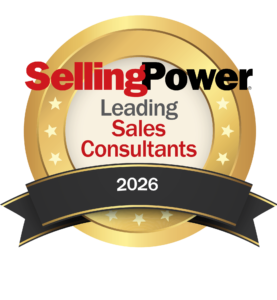Four Tips to Boost B2B Sales Productivity

The pandemic accelerated monumental shifts in B2B sales, including the pressure on organizations to optimize costs spent on processes and people required to close a deal. The shift to virtual selling had a significant impact: 54% of sales reps reported that failure to meet buyers face-to-face hurt their ability to meet sales quota. But sales teams also suffered for putting a premium on efficiency by investing too heavily in achieving the greatest results in the least amount of time per seller. While a streamlined process is good, it is not as crucial as yield and effectiveness in determining the success of a B2B sales team. A sales team can be highly efficient but still not convert a high percentage of leads or close enough deals to bring in (or increase) significant revenue.
Despite the glut of solutions designed to address changes in the current sales environment, sellers still struggle. Quota attainment continues to drop, and nearly half of sales leaders are missing their revenue targets. When Salesforce publicly laments that 50% of sales account executives are responsible for 96% of the company’s annual contract value, the industry clearly has a productivity problem.
Effectiveness, Not Efficiency.
Though time may be one of the most valuable commodities a salesperson has, sales organizations largely fail to optimize it. In 2022, sales reps report spending just 28% of their week selling. That’s down from 34% just five years ago. Administrative tasks and content creation are among the responsibilities that often get in the way of effective sales interactions.
But another common priority is undermining the sales process: the focus on efficiency and not effectiveness. Efficiency means getting the greatest results in the least amount of time per seller. Effectiveness means generating more revenue with the same number of pipeline opportunities.
Rather than efficiency, organizations should focus on effectiveness. Below are a few considerations for making it happen.
1. Eliminate unnecessary administrative tasks
Customer engagement is the foundation of selling. Yet sellers are bogged down by low-priority administrative tasks that force them to juggle tools that add unnecessary friction and pull reps away from customers and prospects.
Evaluate your current tech for visibility into what tools your sales teams use. Get insight into how effectively they’re using them. If your goal is to consolidate your stack or introduce a new platform or application, ensure you conduct adequate training that doesn’t just explain how to use something; show how it saves reps time or reduces their administrative load. Modern sales enablement tools can deliver a revenue lift of 20% within one year, as reps eliminate unnecessary tasks and instead focus on customer engagement.
2. Aim for improving yield
Generating more revenue with the same number of pipeline opportunities is all about yield. To make sellers more effective in every customer interaction, reps need access to the most relevant content – mapped to a specific customer, their go-to-market challenges, and the various personas that comprise the buying team. Of leading organizations, 70% recognize the need for content that better connects solutions to customers’ business outcomes (versus a focus on features and functions) and that failure to have it leads to deteriorating pipeline health.
Improving yield requires sellers to have strong awareness of their audience and products, services, and solutions. Crucially, they also need the competency to clearly connect product capabilities to customer issues and identify new opportunities within existing buying groups to convert that opportunity into revenue. It’s a holistic approach; knowledgeable, consultative, and effective sales engagement requires that sellers have deep customer insight, knowledge, coaching, and content from sales and marketing. Measure content effectiveness to determine expert seller engagement behaviors that can be replicated across the organization, as well as to gauge buyer involvement and deal progression action and motions.
3. Avoid sales-generated content
Because content – e-books, videos, case studies, etc. – often resides across a number of repositories, sellers often lose time exploring folders and files to find what they need, or they end up creating their own. Besides the obvious inefficiencies, there’s the risk that sellers create inaccurate or off-brand content. Without an oversight process – most often provided by the marketing departments that are typically tasked with the production of the most up-to-date, accurate, and relevant content to support the sales process – there’s a good chance that sales-generated material will fail to benefit the organization or fail to align with tough industry compliance regulations.
The majority of B2B buyers want content that tells a strong story that resonates with buying committees and uses data and research to support claims. Look for a sales enablement solution that can deliver approved specific, relevant content in real time, and in any channel. By ensuring reps have access to highly effective content at any moment of engagement, sales teams can focus on what they do best: selling.
4. Establish content oversight
Without oversight, marketing teams are unable to measure the performance of sales tools and content – effectively leaving them blind to business impact. Such obliviousness is costly: Only 35% of B2B content is actively used, even though the most successful companies spend 40% of their annual marketing budget on content creation. To identify true content spend, develop a system that takes into consideration both the internal expenses (resources required to develop content) and external expenses (agency, placement, and collateral costs that are more tangible). Relying on these existing structures can help make sure the resources – time and compensation – of sales and marketing teams aren’t going to waste.
With the B2B sales environment more dynamic and unpredictable than ever, it’s essential for sellers to align sales initiatives to the demands of today’s B2B buyer. Success doesn’t come from a focus on speed but on effectiveness. Eliminating administrative weight, identifying opportunities within buying groups, and using smart and automated content strategies enable sales reps to optimize every customer interaction – increasing effectiveness, improving productivity, and boosting the bottom line.
David von Rothenburg is the global head of Sales and Alliances at Pitcher. Prior to Pitcher, David served as enterprise sales director (DACH) at Showpad, senior regional sales director (EMEA) at ProQuest, and in a number of sales leadership roles at Wolters Kluwer Health.
Get our Enewsletter
Get the latest sales leadership insight, strategies, and best practices delivered weekly to your inbox.
Sign up NOW →